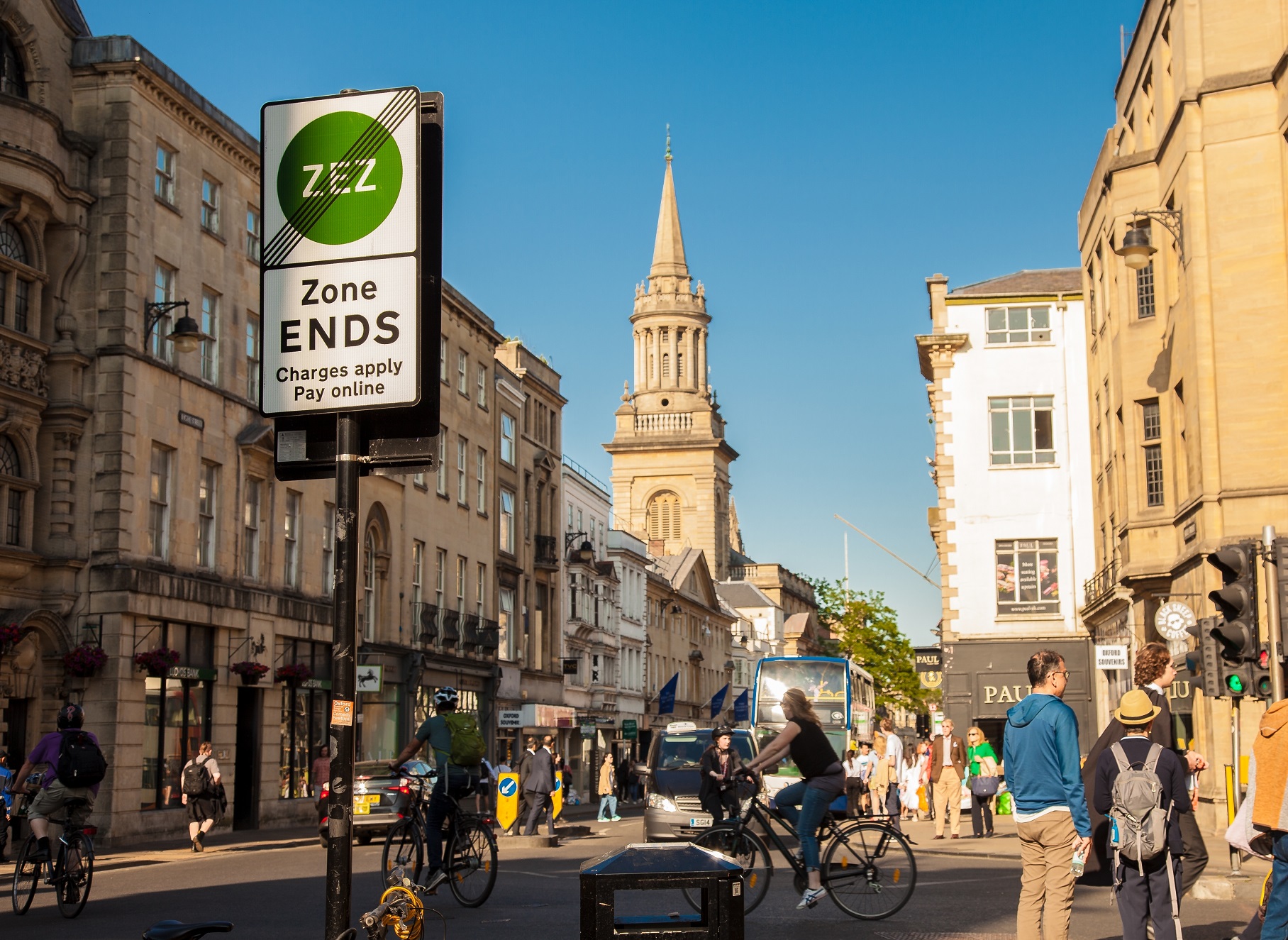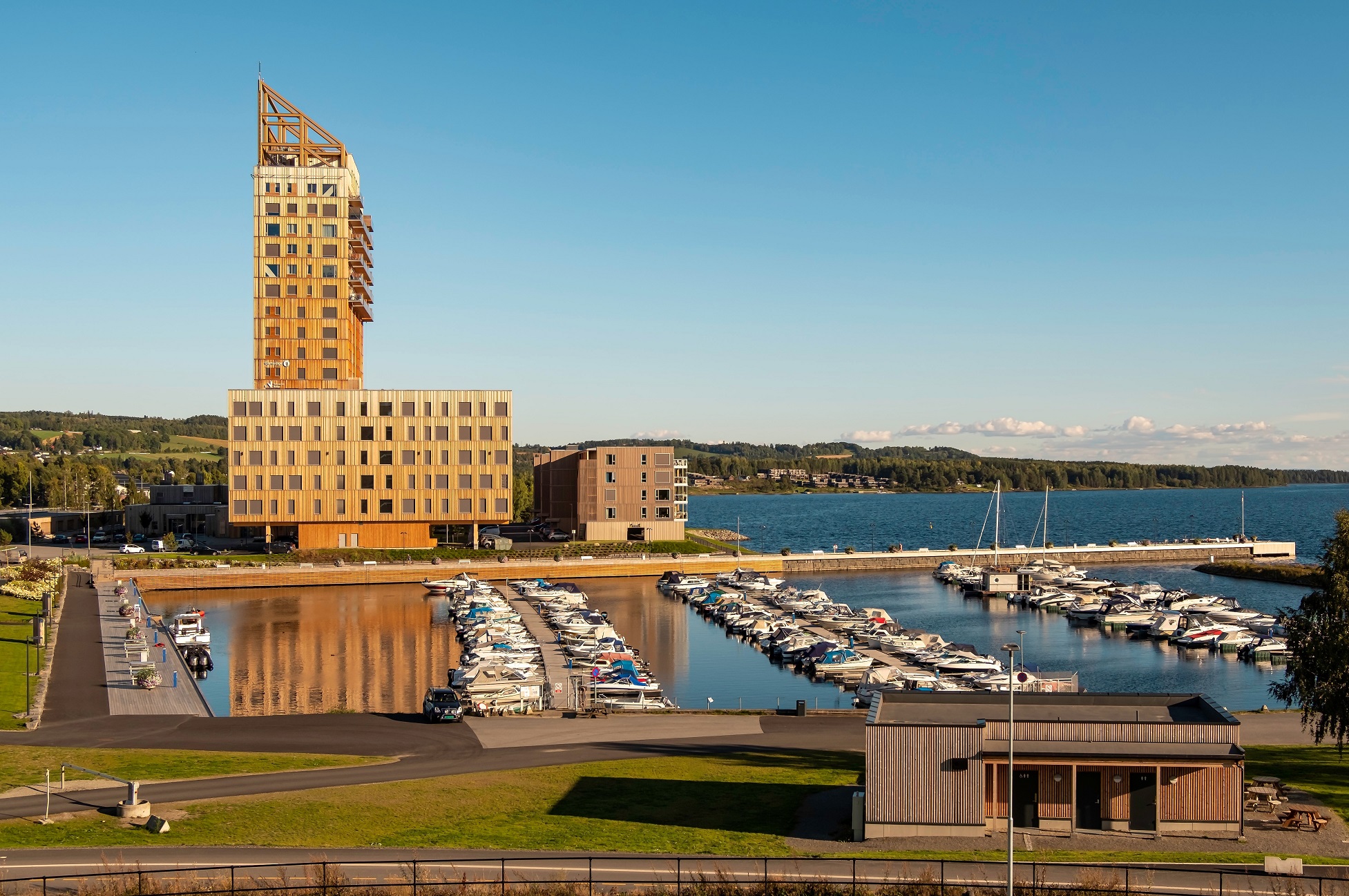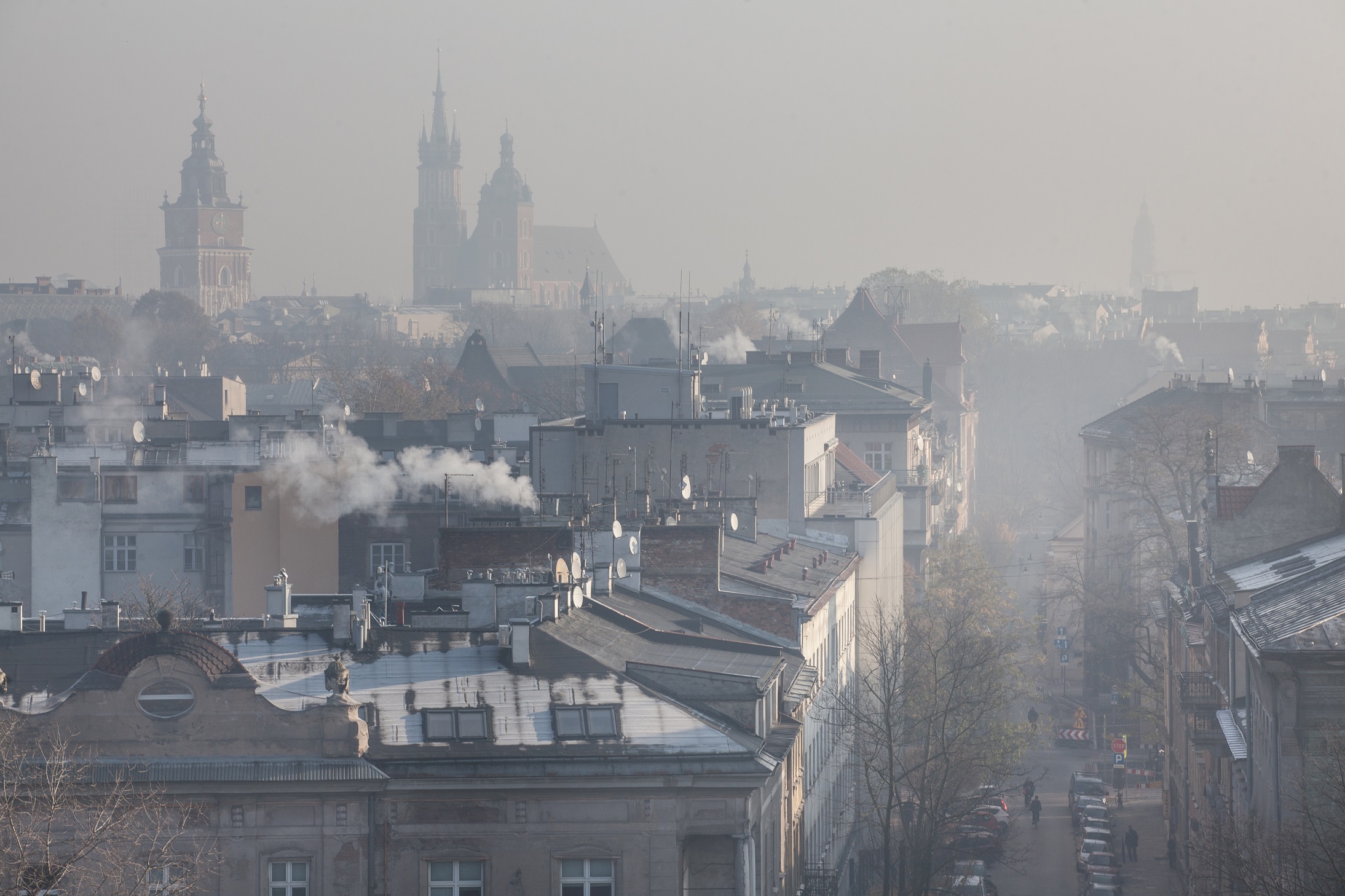Europe opts for clean transport zones

Poland’s first clean transport zone will start operating from July this year in Warsaw. Who will be able to enter it and who will not? Why do cities introduce such restrictions? What does it look like in Europe?
The capital will be the first city in Poland to have this road sign: a green car in a green circle on a white background. It marks the beginning (or end, if crossed out) of the Clean Transport Zone (CTZ). In Warsaw, the installation of these signs is currently underway and the zone will become operational on July 1, 2024.
What is a clean transport zone?
In the countries of the European Union, transport accounts for around 25 percent of CO₂ emissions (European Environment Agency data for 2019). Of these, 71.7 percent come from road transport. Reducing these emissions is one of the EU’s major goals to contribute to achieving climate neutrality in 2050. This is why, for example, the EU wants to ban the sale of cars with internal combustion engines from 2035.
Cars are one of the sources of smog in cities. Smog is created by exhaust fumes, but also by particulates that are produced by the abrasion of tyres and brake pads when the car starts up or brakes (we wrote more about smog here). They also emit nitrogen oxides and so-called volatile organic compounds. Vehicles with diesel engines are the most harmful.
A Clean transport zone is nothing more than a way of making the city’s air cleaner and reducing greenhouse gas emissions. Generally speaking, it is an area where only vehicles that meet certain criteria can enter. What kind of criteria – this is up to the individual city to decide.
Zones have been operating successfully in Europe and around the world. These are the well-known Low Emission Zones (LEZ). In Germany, there is the Umweltzone, in Italy the Zona Traffico Limitato and in London even the Ultra Low Emission Zone. There are more than 320 LEZs in Europe, half of them in Italy.
Zones have been operating successfully in Europe and around the world. These are the well-known Low Emission Zones (LEZ). In Germany, there is the Umweltzone, in Italy the Zona Traffico Limitato and in London even the Ultra Low Emission Zone. There are more than 320 LEZs in Europe, half of them in Italy.
In Poland, the introduction of zones became possible thanks to the provisions of the 2018 Act on Electromobility and Alternative Fuels. It stipulates that the entry of vehicles other than electric, hydrogen or natural gas-powered ones is restricted to SCTs. However, as calculated by the Supreme Audit Office, in the five cities it surveyed, 0.03 percent of cars meet the statutory criteria. The law does, however, give local authorities the option to shape their zones themselves.
Attempt in Krakow
On July 1, 2024, a clean transport zone was to be inaugurated in Krakow. A resolution to introduce it (the first in Poland) was adopted by the City Council by majority vote on November 23, 2022. It was to cover the entire city, so as “not to divide the inhabitants into those who are protected by the provisions of the law and those who are not likely to derive health benefits from the effects of its introduction”, according to the Public Transport Authority of Krakow on its website. Indeed, officials estimated that, thanks to the zone, as early as 2026, particulate pollution would fall by more than 80 percent (compared to 2019) and the pollution with nitrogen oxides by almost 50 percent.
They also estimated that in the first stage of introducing the CTZ, the restrictions would only cover 2 percent of the cars driving in Krakow. This is because they were only supposed to apply to cars that did not meet the Euro 1 and Euro 2* emission standards, currently around 30 years old. There were many exceptions to this rule – e.g. for medical transport, agricultural vehicles or vehicles belonging to people with disabilities.
Implementation in Warsaw
What didn’t work in the former capital is becoming a reality in the current one. And this is because Warsaw has adopted different rules for its clean transport zone. First of all, it will only cover a section of the city – most of the city centre and some of the surrounding districts. This is 37 square kilometres, 7 per cent of the capital’s area.
Entry will be restricted to petrol-engined vehicles (including LPG) manufactured before 1997 or which do not meet the Euro 2 standard and to diesel-engined vehicles (including LPG) manufactured before 2005 or which do not meet the Euro 4 standard. For the first 3.5 years, Warsaw residents settling their taxes there will be exempt from the restrictions. The zone will also not cover owners of historic vehicles, people with disabilities or those over 70 years of age.
Officials estimate that the zone’s restrictions will affect 3% of cars. This is because the city authorities wanted them to be mild in the initial phase. The requirements will be tightened every two years, starting in 2026. Thanks to the zone, particulate matter emissions are expected to decrease by 20 percent already this year compared to 2020, and by 69 percent in 2032.
And how are others doing it?
The Clean Cities Campaign calculated that between 2019 and 2022, the number of clean transport zones in Europe increased from 228 to 320 ( i.e. by 40 percent). This is due, among other things, to changes in legislation in many countries. By 2025, there are expected to be 507 of them (i.e. an increase of 58 percent over 2025).
What’s more, by next year, 27 existing zones are to either be expanded or become more restrictive (this will be the case in London, Paris, Brussels and Berlin, among others). Zero-emission zones are already in operation in Oxford ( in the picture) and parts of London. By 2035, there are expected to be 35 of these in Europe (26 will apply to delivery vehicles only).
We’ll start our journey through clean transport zones in Italy, as there were 172 here in 2022. We stop in Milan, which has two zones – Area B, covering almost the entire city, and Area C, the historic centre.
Area B has been in operation since 2019. The criteria for cars are changing over time – until 30 September 2024, the Euro 3 standards for combustion passenger cars and Euro 6 for diesel ones still apply. You can pay a fine of EUR 80 for entering with the improper vehicle.
Area C is tolled, you have to pay EUR 7.50 to enter it. Electric cars, motorbikes and mopeds or cars transporting people with disabilities are exempt from the toll. The applicable standards are the same as in Area B. Area C operates Monday to Friday from 7:30 am to 7:30 pm.
Let’s now move to Paris, which has had a policy for several years of removing cars from the city and supporting other modes of transport. Today, one in three residents of the French capital has a car, and the latest traffic surveys show that Parisians are more likely to use bicycles than cars
Paris’ Zone à faible emission was created in 2016 and was the first in the country. The French introduced the Crit’Air sticker system. These are valid throughout the country and indicate the emission category of the vehicle. Individual cities, creating clean transport zones, decide which colours of vignettes (and the cars to whose windscreens they are stuck) can enter them.
The zone in Paris covers the entire agglomeration. For passenger cars, it is in force from Monday to Friday between 8 a.m. and 8 p.m. Currently, cars with Crit’Air 5 and Crit’Air 4 stickers, i.e. brown and grey, will not enter.
The city authorities had planned to introduce a zero-traffic zone in the city centre. Following protests, they softened its rules and decided to let in, for example, taxis or cars of residents of the area. It was supposed to be in force from 2024, it will start… it is not known when. The city authorities explained that they lacked the infrastructure to automatically keep an eye on drivers.
We now head north to London, which has two zones, the Low Emission Zone and the Ultra Low Emission Zone. The LEZ was established in 2008 and covers almost all of Greater London. It is in force at all times except Christmas. However, it applies to vehicles over 3.5 tonnes (currently they must meet the Euro 3 or Euro 6 standard for buses).
The ULEZ was established in 2019 and initially covered the city centre; it was extended to cover the whole of the city in 2023. It applies in the same way as the Low Emission Zone. The standards for passenger cars are Euro 4 (internal combustion) and Euro 6 (diesels). Vehicles that do not meet these criteria can enter the zone provided they pay a charge (£12.5 per day). However, there are not many of them. The London authorities report that 95 per cent of cars circulating in London meet the ULEZ requirements.
Since the introduction of the Ultra Low Emission Zone, toxic nitrogen dioxide emissions in the city centre have been halved. Between 2019 and 2022, carbon dioxide emissions have been reduced by 800,000 tonnes.
Returning to Poland, we take a short break in Berlin. Umweltzone has been in force in the city centre (88 sq km) since 2008, and currently only cars with a green sticker with the number 4 (i.e. meeting the Euro 1 standard for internal combustion engines and Euro 4 for diesel) can enter. As in France, the same stickers apply in all German cities with clean transport zones. However, each sets its own rules, although most have adopted the same criteria as the capital.
Who’s after Warsaw?
Krakow is still fighting for its clean transport zone. A new resolution has already been submitted to the City Council. The zone is to cover the whole city again and come into force on January 1, 2026. The Krakow authorities want to devote the time until its introduction to public consultations and educating residents.
In 2025, the CTZ is to take effect in Wrocław. It will cover the central districts – 17.5 square kilometres or 6 percent of the city’s area (inhabited by 22.5 percent of Wrocław’s registered residents). The entry criterion will be the Euro 3 standard for diesel cars and Euro 4 for diesels. The criteria will be tightened every five years.
The authorities of Łódź, Poznań and Katowice are also planning to introduce zones.
The authorities of Łódź, Poznań and Katowice are also planning to introduce zones.
“Observing the first attempts to introduce CTZs in Poland, it is hardly surprising that local authorities are cautious about the topic, which in the long run may be one of the most effective measures to reduce the level of pollution in cities, but the choice of the most effective solutions will certainly be the subject of heated disputes among all the stakeholders in urban space”. – reads the website of the City of Łódź.
Indeed, the zones raise objections. There is an argument about the exclusion of people who cannot afford a newer car, mainly the elderly and less well-off. This is why, along with closing the entrance, other forms of transport need to be opened up: investing in punctual, frequent and comfortable public transport, building cycle paths, creating a city where it is pleasant to move around on foot.
*Euro standards are the European standard for car emissions, from Euro 1 to Euro 7 (this standard will apply to vehicles homologated after 2023, currently the highest standard is Euro 6d).
At Łukasiewicz – PIT we are also developing low-emission transport. Take a look here to read about our hydrogen technology projects.




